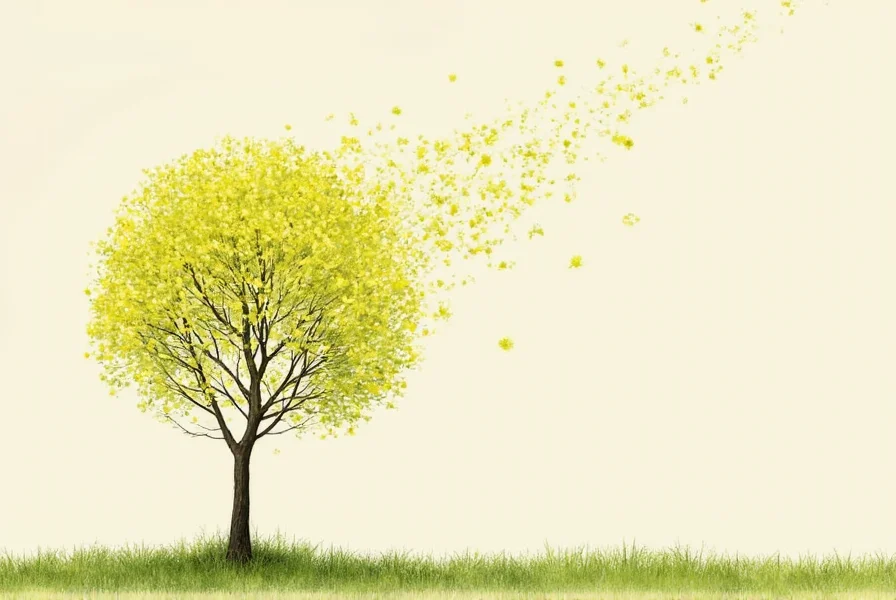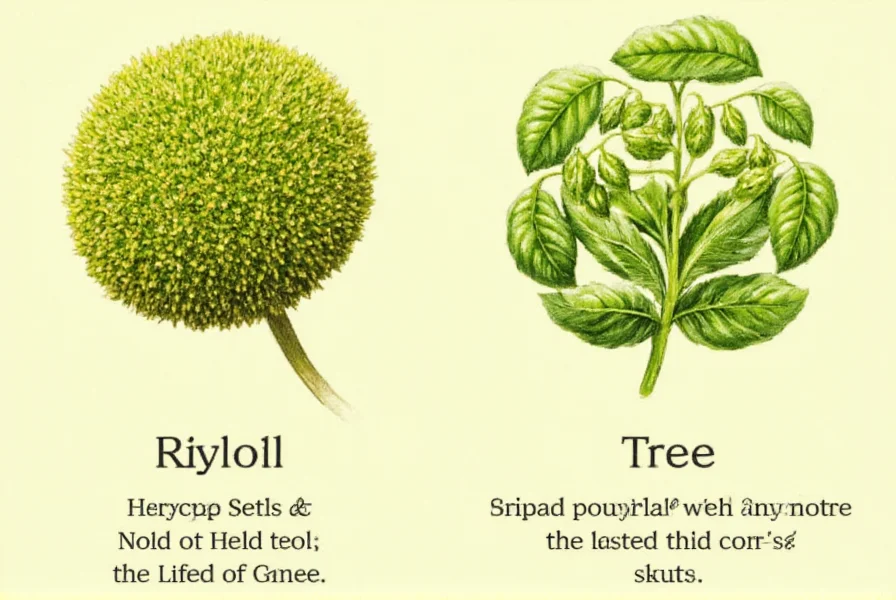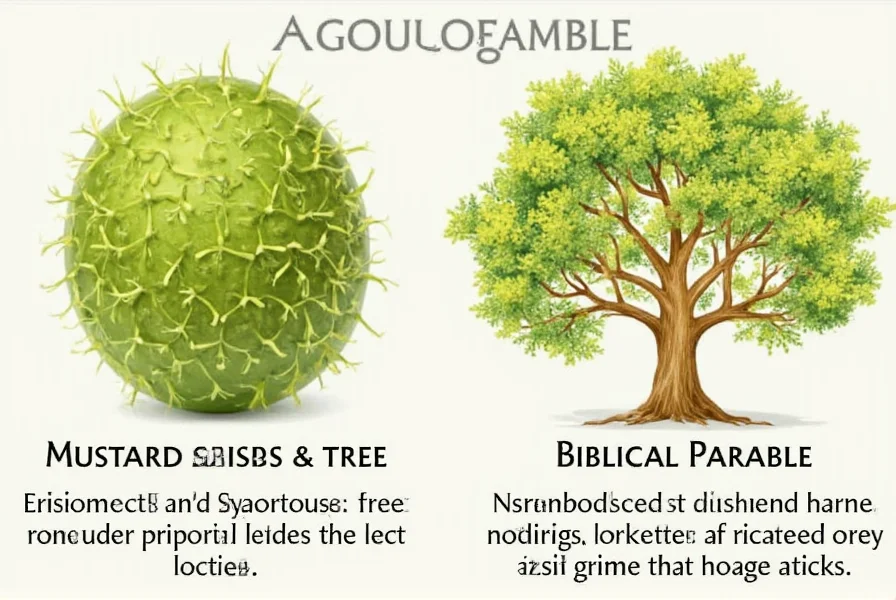The phrase ‘mustard seed and tree’ primarily references a well-known parable in the Christian Bible where Jesus compares the Kingdom of God to a mustard seed. This comparison has sparked centuries of discussion regarding its botanical accuracy and symbolic meaning. Understanding both the historical context and modern botanical facts provides valuable insight into this enduring metaphor.
The Mustard Seed Parable in Historical Context
Recorded in Matthew 13:31-32, Mark 4:30-32, and Luke 13:18-19, the mustard seed parable describes how the smallest of seeds grows into something large enough for birds to nest in its branches. In first-century Palestine, mustard plants were common in gardens and fields. The specific plant referenced was likely black mustard (Brassica nigra), which grows rapidly and can reach heights of 6-20 feet.
When examining the mustard seed parable explained through historical agriculture practices, we discover that ancient farmers considered mustard a “weed tree” due to its vigorous growth. The term “tree” in the parable reflects ancient Near Eastern agricultural terminology rather than modern botanical classification. This contextual understanding resolves apparent contradictions between the parable's description and contemporary plant science.

Botanical Reality of Mustard Plants
Scientifically speaking, mustard plants belong to the Brassicaceae family. Black mustard (Brassica nigra) and related species grow as herbaceous annuals or short-lived perennials, not as woody trees. Their growth pattern features a single main stem with multiple branches, creating a shrub-like appearance. While impressive compared to other garden plants of the era, they don't develop true woody tissue like actual trees.
Does mustard grow into a tree according to modern botany? The answer requires understanding classification systems. Botanists define trees as perennial plants with an elongated stem, or trunk, supporting branches and leaves, and with secondary growth that produces wood. Mustard plants lack this secondary growth and woody structure, making them large herbaceous plants rather than trees.
| Plant Characteristic | Mustard Plant | True Tree |
|---|---|---|
| Height Range | 6-20 feet | Varies (typically 15+ feet) |
| Stem Structure | Herbaceous, non-woody | Woody with secondary growth |
| Lifespan | Annual or biennial | Perennial (many years) |
| Branching Pattern | Dense, bushy growth | Defined trunk with branches |
Reconciling the Parable with Botanical Facts
The mustard seed tree metaphor meaning becomes clear when examined through first-century agricultural understanding. Ancient farmers used “tree” more broadly to describe any plant with substantial height and branching structure. To Jesus’ audience, the mustard plant’s growth from a tiny seed (about 1-2mm) to a plant towering over other garden vegetation represented extraordinary transformation.
Modern scholarship on the biblical mustard seed tree emphasizes the parable’s cultural context. In ancient Palestine, garden plants typically grew 1-3 feet tall. A mustard plant reaching 8-10 feet would indeed appear “tree-like” by comparison. This perspective helps explain why the parable describes birds nesting in its branches—a realistic observation of small birds seeking shelter in the plant’s dense foliage.
Growing Mustard Plants Today
For those interested in growing mustard plants from seed, the process demonstrates the rapid growth referenced in the parable. Mustard seeds germinate in 3-10 days and can reach full height within 6-8 weeks under optimal conditions. Gardeners should note that while the biblical parable focuses on black mustard (Brassica nigra), modern gardeners often grow yellow mustard (Sinapis alba) or other varieties.
The difference between mustard shrub and tree becomes apparent when cultivating these plants. Without woody tissue, mustard plants cannot achieve the structural integrity of true trees. Their impressive height results from rapid cell elongation rather than secondary growth. This biological reality doesn’t diminish the parable’s message but rather enhances our appreciation of how accurately it reflected observable agricultural phenomena.

Scientific Accuracy of the Mustard Seed Parable
When evaluating the mustard seed parable scientific accuracy, scholars note that ancient descriptions prioritized functional observation over technical classification. The parable’s purpose wasn’t botanical instruction but spiritual teaching about exponential growth from humble beginnings. This approach aligns with how pre-scientific cultures described natural phenomena based on observable characteristics rather than taxonomic precision.
Contemporary agricultural studies confirm that black mustard can indeed grow taller than most contemporary garden plants, creating sufficient cover for small birds. Research published in the Journal of Ethnobiology notes that in optimal conditions, Brassica nigra can reach heights of 10-15 feet within a single growing season—remarkable for a plant starting from a seed smaller than a grain of wheat.
Conclusion: Understanding the Metaphor
The relationship between mustard seed and tree represents a powerful metaphor grounded in observable reality. While not a botanical tree, the mustard plant’s extraordinary growth pattern provided an effective teaching tool. Understanding both the historical context and modern botanical facts enriches our interpretation of this enduring parable without diminishing its spiritual significance.
Whether examining the mustard plant size and growth for gardening purposes or studying the historical context of mustard seed parable, recognizing the intersection of agricultural reality and metaphorical teaching offers valuable insights. The parable remains effective precisely because it used a familiar, observable phenomenon to convey a profound spiritual truth about growth and transformation.











 浙公网安备
33010002000092号
浙公网安备
33010002000092号 浙B2-20120091-4
浙B2-20120091-4